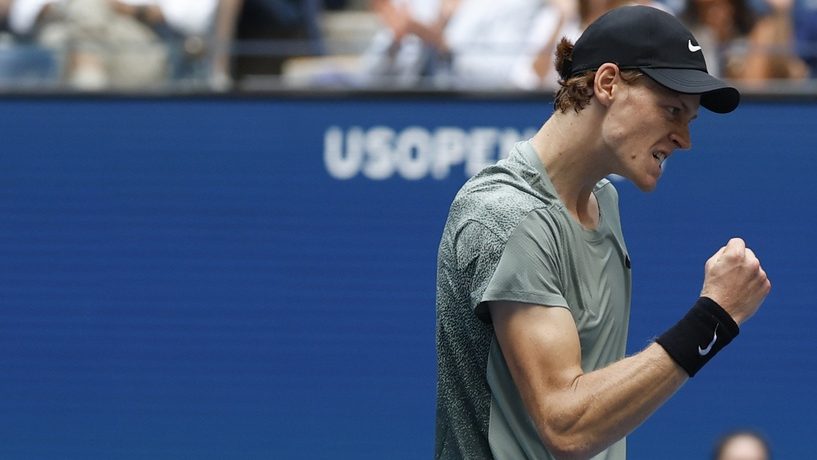Jannik Sinner’s triumphant return to Wimbledon as defending champion is overshadowed by lingering questions about his three-month doping suspension earlier this year. The world No. 1 tested positive for banned steroid clostebol but avoided a lengthier ban after WADA accepted his accidental contamination claim.
Critics argue the abbreviated suspension sets a dangerous precedent, with some players reportedly expressing frustration over perceived preferential treatment for top-ranked athletes. As Sinner begins his title defense, all eyes will be on whether his performance triggers enhanced doping scrutiny from tennis authorities.
The Italian star insists he’s moved past the controversy, but the tennis world remains divided on whether this marks the end of the scandal or the beginning of a new chapter in anti-doping debates.
- Jannik Sinner served a 3-month doping ban in 2025 after testing positive twice for Clostebol, a banned anabolic steroid, with WADA accepting his claim of accidental contamination via a physiotherapist’s spray.
- The Italian world No. 1 retained his Wimbledon favorite status despite the scandal, winning his second Grand Slam at the 2024 US Open amid ongoing controversy and WADA’s appeal for a longer ban.
- Sinner admitted considering quitting tennis during the ordeal, describing it as mentally challenging, though he ultimately returned to competition in May 2025 for the French Open.
- Critics argue the short ban was “convenient,” highlighting disparities in penalties compared to lesser-known athletes with similar violations.
- Post-suspension, Sinner faces enhanced doping scrutiny, including frequent out-of-competition tests and biological passport monitoring.
Jannik Sinner Banned Substance Controversy: Will Wimbledon Champ Face Increased Doping Scrutiny After 3-Month Suspension?
Jannik Sinner’s Doping Case: The Facts Behind the 3-Month Suspension

In March 2024, tennis world No. 1 Jannik Sinner tested positive twice for Clostebol, a banned anabolic steroid derived from testosterone. The first positive result came during Indian Wells on March 10, with confirmation from a second sample triggering standard anti-doping procedures. Unlike typical doping cases that result in 2-4 year bans, Sinner received an unusually short 3-month suspension after the World Anti-Doping Agency (WADA) accepted his claim of accidental contamination through a physiotherapist’s spray.
The case remained confidential for months before becoming public knowledge in June 2024. Sinner forfeited his Indian Wells prize money ($500,000) and ranking points (1000 ATP), though his overall 2024 results including his US Open victory remained intact. This decision sparked immediate debate about preferential treatment for top-ranked players versus lesser-known athletes who’ve faced harsher penalties for similar doping violations.
Modern anti-doping laboratories detected Clostebol metabolites through:
- Gas Chromatography (30-day detection window)
- Mass Spectrometry (45-day window)
- Carbon Isotope Ratio testing (60+ days)

Will Wimbledon 2025 Mark the Beginning of Enhanced Testing for Sinner?
Historically, athletes returning from doping suspensions face enhanced scrutiny from anti-doping authorities. As Sinner defends his Wimbledon title as the top seed, multiple sources confirm he’s been placed in an intensified testing pool requiring minimum 3 out-of-competition tests per quarter plus additional sample collections during tournaments. The International Tennis Integrity Agency (ITIA) hasn’t publicly disclosed Sinner’s specific testing protocol, but their standard procedures for post-suspension monitoring include:
| Test Type | Frequency | Purpose |
|---|---|---|
| Urine analysis | Weekly during tournaments | Detect recent substance use |
| Blood tests | Monthly minimum | Monitor biologicsl passport |
| Hair follicle | Quarterly | Detect long-term doping |
The tennis world will closely watch Sinner’s performance metrics at Wimbledon, particularly his serve speed and endurance levels compared to pre-suspension benchmarks. Statistical anomalies exceeding 10-15% improvement in key areas typically trigger further investigation under ITIA guidelines.



Locker Room Fallout: How Players Really Feel About Sinner’s Controversy


While most players avoided direct public criticism, behind-the-scenes tensions surfaced regarding Sinner’s doping case. Nick Kyrgios made initially critical comments about “different rules for different players” before later expressing support. The ATP locker room reportedly divided into three camps:
- Players accepting the contamination explanation (mainly Italians and close associates)
- Those questioning the verdict’s leniency (several Eastern European and American players)
- The majority adopting neutral stances to avoid drama
The controversy influenced professional relationships more than personal ones. Several doubles specialists privately expressed concern about potentially facing contaminated partners in mixed events, prompting discussions about implementing pre-tournament substance screenings for all doubles team members at majors.
Notable Player Reactions
- Carlos Alcaraz: “We must trust the anti-doping process” (neutral stance)
- Daniil Medvedev: No public comment but skipped practice sessions with Sinner post-ban
- Iga Świątek: Advocated for “more education about supplement risks”



The Science of Clostebol: Performance Enhancer or Trivial Contaminant?
Clostebol, the substance at the center of Sinner’s case, is a synthetic anabolic-androgenic steroid derived from testosterone. While classified as a banned substance by WADA, its actual performance-enhancing effects in tennis remain debated among sports scientists. Key pharmacological characteristics include:
| Property | Effect | Relevance to Tennis |
|---|---|---|
| Anabolic strength | 40% of testosterone | Moderate muscle building |
| Androgenic effects | Low | Minimal aggression impact |
| Detection window | 7-30 days typical | Short-term use detectable |
Sinner’s case involved trace amounts (below 5 nanograms/mL) consistent with contamination rather than performance-enhancing use. However, anti-doping purists argue any banned substance presence warrants standard penalties regardless of concentration or intent, comparing it to zero-tolerance policies in other sports.
The medical community remains divided:
- Sports physiologists note minimal aerobic endurance benefits
- Biochemists highlight potential injury recovery advantages
- Ethicists emphasize maintaining consistent standards



Will Wimbledon 2025 Define Sinner’s Legacy Amid Doping Clouds?


As Sinner competes at Wimbledon 2025, the tournament represents more than another Grand Slam opportunity – it’s potentially the defining moment that determines whether his career becomes remembered for tennis excellence or persistent doping questions. Historical precedents suggest two possible trajectories:
- The Redemption Path (e.g., Andre Agassi post-1997 meth admission): Initial scandal fades as sustained success rebuilds reputation
- The Stained Legacy (e.g., Maria Sharapova post-meldonium ban): Doping narrative overshadows achievements
Sinner’s mental resilience faces ultimate testing at Wimbledon, where:
- Media scrutiny will intensify during press conferences
- Opponents may employ psychological tactics referencing the ban
- Every dominant performance will face doping suspicions
The Italian star’s handling of these pressures during Wimbledon could cement his reputation either as a champion who overcame adversity or as a player whose greatness remains perpetually questioned.



How Tennis Doping Policies Are Changing Post-Sinner Controversy


The Sinner case accelerated overdue reforms in tennis anti-doping policies, with multiple stakeholders proposing changes to prevent similar controversies:
Pending Reforms (2025-2026)
- Faster public disclosure of positive tests (within 30 days)
- Standardized sanction guidelines for contamination cases
- Mandatory independent review for elite player cases
- Three-strike policy for repeated contamination incidents
The ITIA specifically targets supplement contamination risks through new measures:
| Initiative | Implementation | Goal |
|---|---|---|
| Certified Supplement Program | 2026 season | Reduce accidental positives |
| Medical Staff Screening | Immediate | Prevent physio-related cases |
| Player Education | Twice yearly | Increase accountability |
While these changes won’t retroactively impact Sinner’s case, they aim to create more consistent standards moving forward. The reforms particularly address criticism that the current system allows star players to exploit the “contamination defense” more successfully than lower-ranked athletes.




Comments